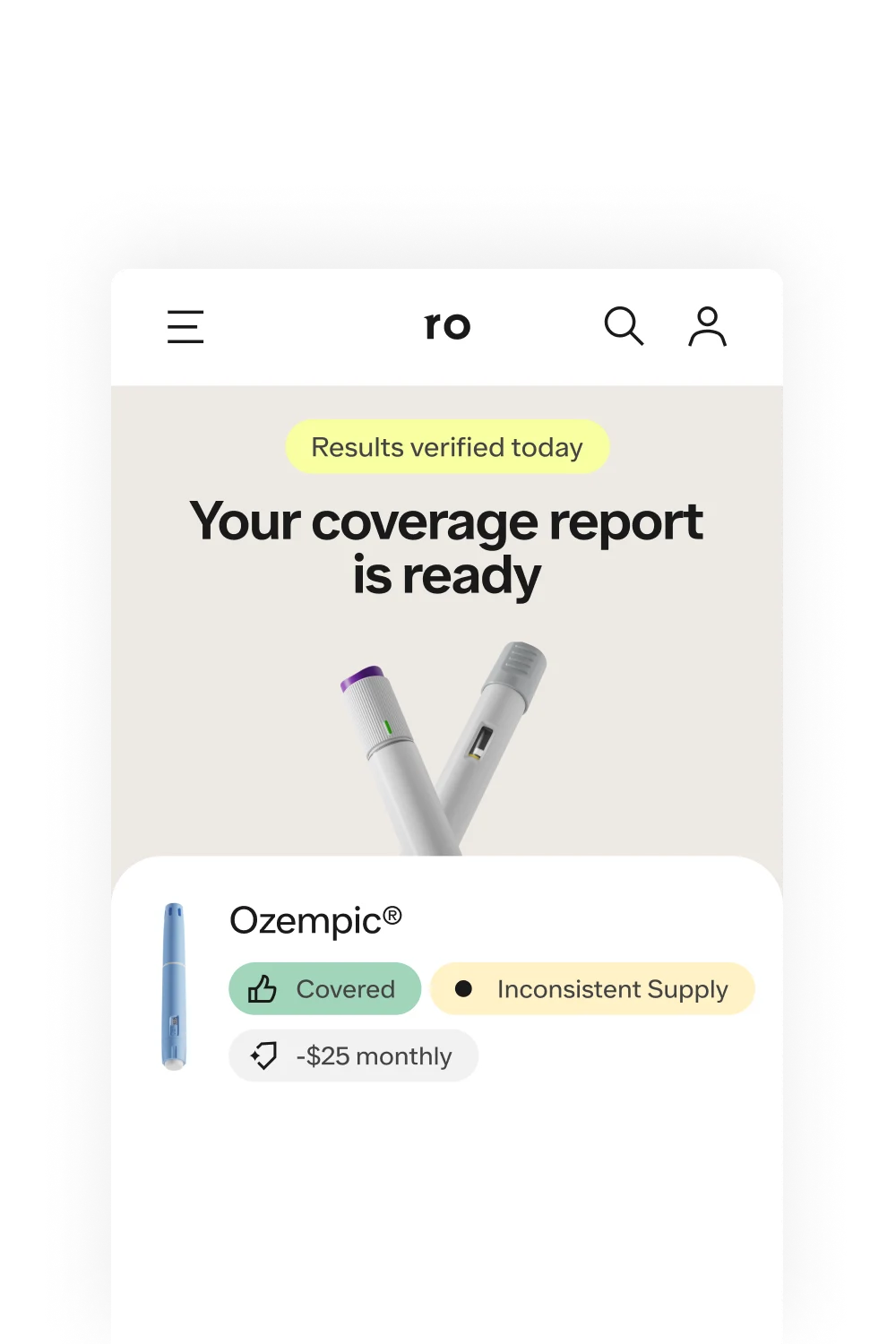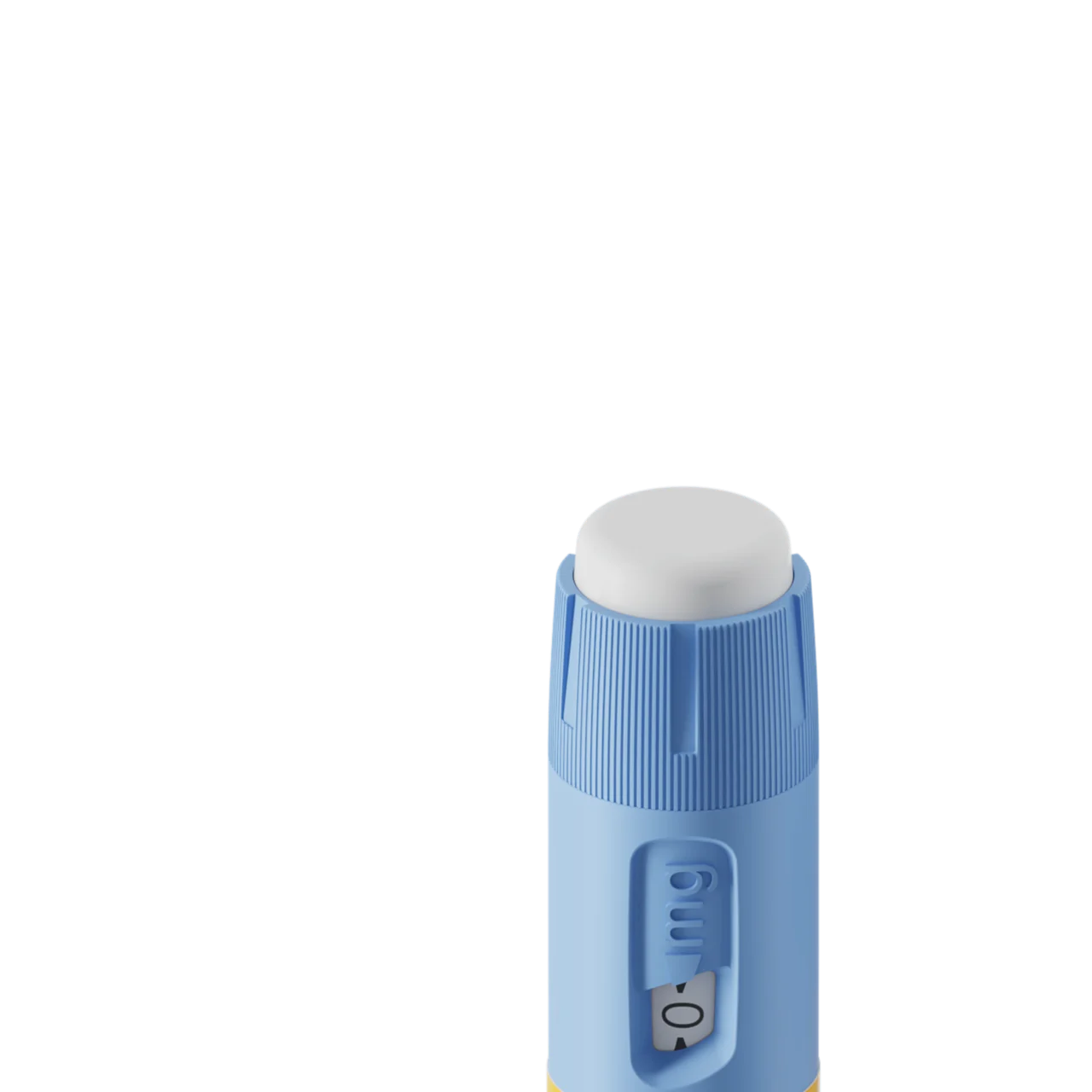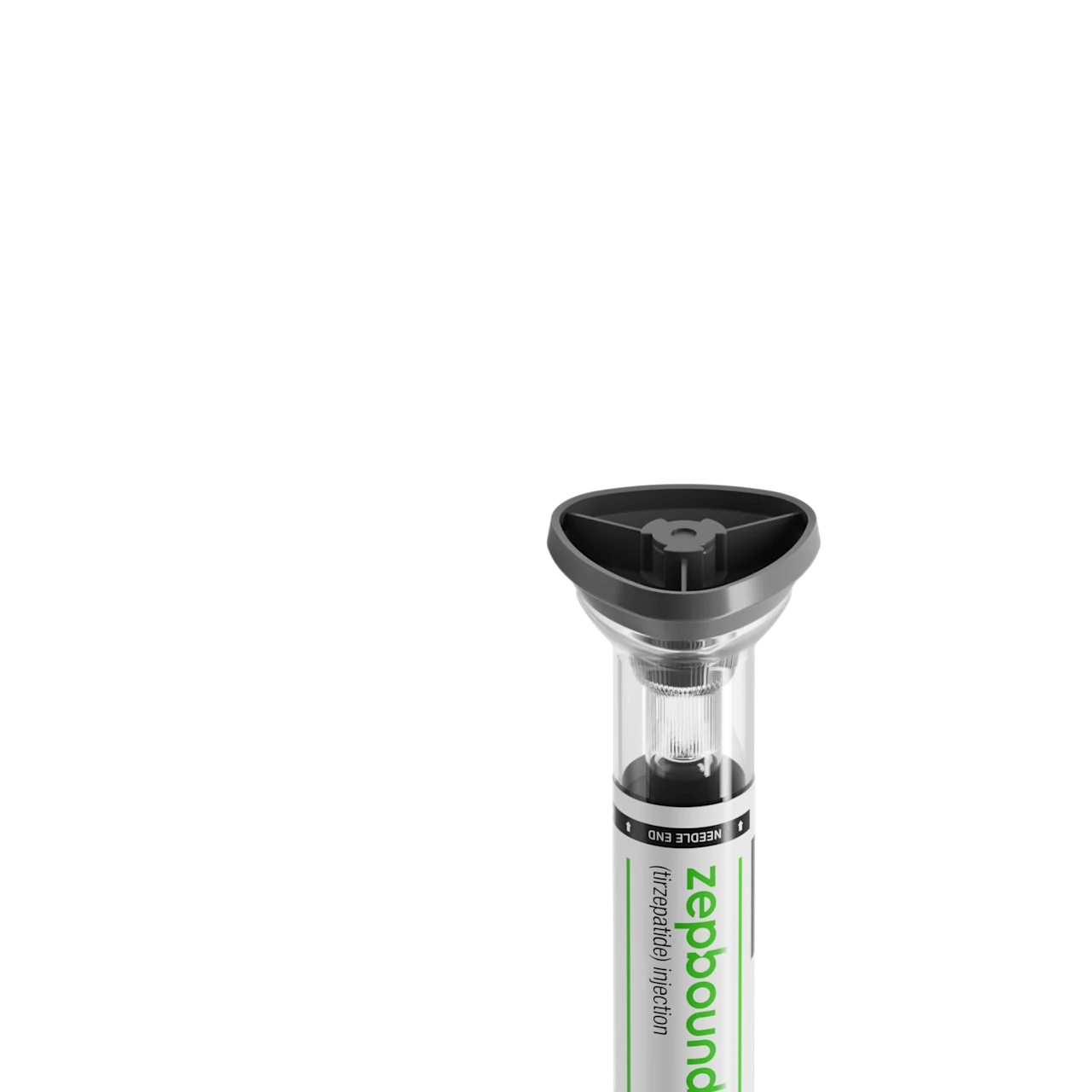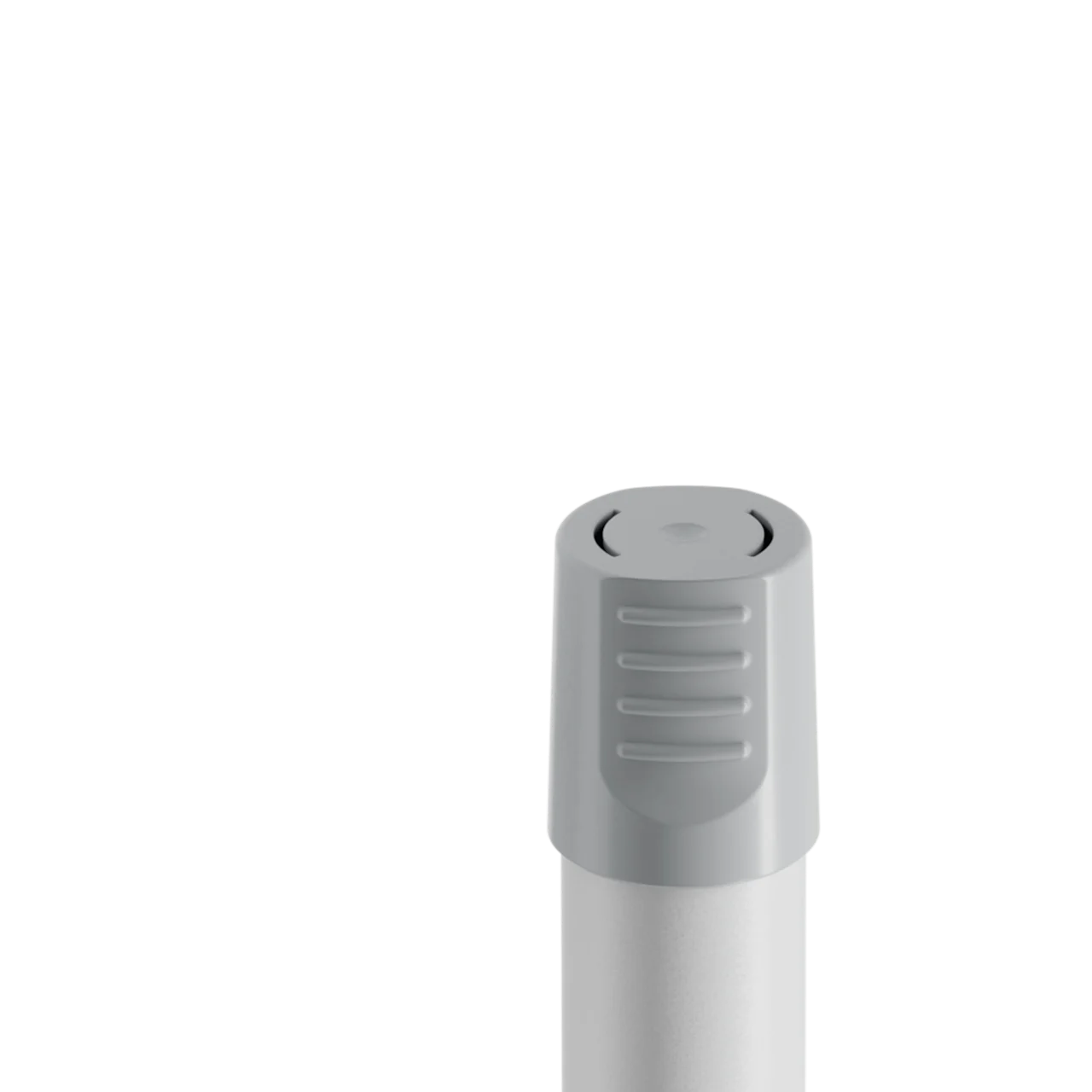Here's what we'll cover
Ozempic (semaglutide) belongs to a group of medications called GLP-1s. Commonly prescribed to people with type 2 diabetes or prescribed off-label to treat weight loss, these drugs work by slowing down digestion, improving blood sugar control, and regulating your appetite. Given their effects on your digestive system, gastrointestinal side effects can be common on Ozempic.
If you’ve been experiencing nausea or vomiting on Ozempic, you may be wondering how you can get some relief. And whether your diet is contributing to your side effects. Well, while there aren’t any foods that interact dangerously with Ozempic, altering what you eat may help you avoid or lessen some unpleasant side effects and possibly even help improve the success of the drug.
Here’s a look at which foods you may want to avoid while taking Ozempic and why.
What types of food should you avoid while taking Ozempic?
No foods are “off-limits” when you’re taking Ozempic, meaning no foods interact with the medication in a dangerous way. However, some foods and drinks can cause symptoms similar to the medication’s side effects, and others might make weight loss or diabetes control more challenging. Here are six types of food to avoid or limit to get the most out of Ozempic:
1. Fried, greasy foods
Many of the most common side effects of Ozempic are stomach-related—things like nausea, bloating, and gas. Greasy fried foods can cause these symptoms on their own, so combining them with Ozempic may increase the odds that you experience bloating or nausea. Greasy foods are also usually calorie-dense, which can increase weight and worsen your heart health.
Examples of fried, greasy foods to avoid on Ozempic include fast food, burgers, fries, chips, and anything fried in oil. Fried food consumption is also linked to an increased risk of several health conditions, including type 2 diabetes, heart failure, obesity, and high blood pressure.
2. Sugary foods and drinks
Sugary foods and beverages—like soda, candy, and many pre-packaged desserts—can pose extra problems for those working to manage diabetes or obesity. Foods with added sugar quickly spike blood sugar levels and can make it hard to manage these conditions, potentially countering the benefits of Ozempic.
Regularly drinking sugary drinks is also associated with weight gain, so drinking these beverages may slow your weight loss efforts on Ozempic as well. (Sugary beverages are also linked to other serious health conditions, including heart disease, kidney disease, and gout when consumed frequently.) The carbonation in soft drinks can also worsen indigestion or abdominal pain, two potential side effects of Ozempic.
Sugary drinks include not just regular soda, but any drink sweetened with added sugar, which may include:
Sports drinks
Fruit drinks
Energy drinks
Sweetened water
Coffee and tea beverages
Read nutrition labels and watch out for hidden sugars in items that may not taste sweet. For example, many people don’t realize that many commercial breads on grocery store shelves are actually loaded with sugar. Even if foods don’t report added sugar on the label, look out for sugar alcohols such as xylitol and sorbitol. They can also worsen Ozempic side effects like diarrhea.
3. High sodium foods
Packaged snacks like potato chips and premade meals like soup or frozen dinners often contain incredibly high amounts of salt. According to the CDC, 90% of Americans 2 years and older consume too much sodium.Too much salt in your diet can lead to high blood pressure and other forms of heart disease.
In adults with type 2 diabetes and known heart disease, Ozempic can lower the risk of heart attacks, and strokes, but it’s important to remember this is when combined with a healthy diet and lifestyle. A high-sodium diet can potentially thwart this effect. And, super salty foods can worsen or mimic some of the side effects of Ozempic, including nausea, vomiting, and abdominal pain.
If you’re working to manage type 2 diabetes, your heart health and/or achieve weight loss goals, opt for low-sodium options at the grocery store or prepare your own food when possible.
4. Refined carbohydrates
While white pasta, bagels, or breakfast cereals may seem like quick, easy food options, they also usually fall into the category of high glycemic foods. This means the body absorbs them quickly and converts them into glucose, which can cause blood sugar levels to spike.
Refined carbohydrates are best consumed in moderation when eating to manage diabetes or reach a healthy body weight. Even adding just 100 grams of added sugar or starch to your daily diet can lead to long-term weight gain, according to one study.
When eating carbs, it’s helpful to check the glycemic index, which scores carbohydrates, including sugars, on a scale of 0 to 100. It’s best to choose low glycemic index foods, such as whole grains, if you’re trying to avoid spikes in blood sugar. While taking Ozempic, consider limiting high-glycemic index foods such as:
White bread and bagels
Sugary, processed cereals
Instant oatmeal (particularly processed options with added sugar)
Many pre-packaged sugary snack foods
White rice (alone, without additional vegetables or protein)
5. Starchy vegetables
You may be surprised to hear that all vegetables are not created equal when it comes to blood sugar management. For instance, starchy vegetables like potatoes or corn are higher in carbohydrates and calories than non-starchy vegetables.
All can contain important nutrients and may still be a key part of your diet, so it’s best to talk to your healthcare provider about which vegetables you wish to consume in moderation. For example, you can combine a high-starch food with non-starch vegetables such as leafy greens to balance the effects on your blood sugar levels. That being said, any vegetable, even the starchy ones, still makes a better snack than any of the foods mentioned earlier—fried foods, refined carbohydrates, and sugary foods.
6. Alcohol
Drinking alcohol is not forbidden when taking Ozempic. However, it’s important to talk to your healthcare provider about how much alcohol you can consume and how to best monitor it. There aren’t any clinical studies evaluating the use of Ozempic with alcohol. However, both Ozempic and alcohol can lower blood sugar, so combining them could potentially lead to low blood sugar, especially if you have type 2 diabetes and are also taking insulin.
Plus, many alcoholic beverages and cocktails may contain added sugar, which you should try to avoid on Ozempic. Alcoholic drinks can also worsen or mimic some side effects of Ozempic, such as diarrhea, heartburn, and nausea.
While alcohol is not explicitly forbidden, remember to consume it in moderation. It’s recommended that women drink no more than one drink daily, and men drink no more than two drinks daily, preferably with a meal.
Foods to eat on Ozempic
When taking Ozempic, you want to focus on foods that keep your blood sugar steady. These include fiber-rich carbohydrates and lean proteins, such as:
Whole grains like bulgur, barley, and quinoa
High-fiber bran cereal or steel-cut oatmeal without added sugar
Non-starchy vegetables like greens
Fruits like apples, oranges, and grapefruits
Nuts and seeds
Legumes and beans
Unsweetened milk and yogurt
Lean proteins, such as fish, chicken, tofu, and beans, are also good to incorporate in your diet when managing type 2 diabetes. Plus, these foods can also support weight loss, if you’re taking Ozempic to lose weight.
How to manage side effects from Ozempic
The most common side effects of Ozempic are digestive in nature, and include nausea, vomiting, diarrhea, abdominal pain, and constipation. If you experience any of these effects, adjusting your diet to eat less of the foods we listed above can help. For example, fried, fatty foods can increase your risk of nausea, as can super salty foods. Sugary foods, drinks, and alcohol can worsen diarrhea while also causing blood sugar spikes. So, avoiding these foods on Ozempic can help you better manage side effects.
If you’re experiencing nausea on Ozempic, eating bland, low-fat, and watery foods can help you feel better as your body gets used to the medication. Options include crackers, apples, soup, gelatin, and yogurt.
Adjusting your eating habits can also help relieve side effects on Ozempic such as nausea, constipation, and diarrhea. Try these changes:
Eat more slowly
Eat without distractions, so you can focus on the flavor and how full you feel
Stop eating once you feel full
Eat smaller meals more often as opposed to larger meals less often
Don’t lie down after you eat
Rx weight loss with Ro
Get access to prescription weight loss medication online
Bottom line: is an “Ozempic diet” right for you?
The FDA approved Ozempic to be used along with a healthy diet and regular exercise to manage diabetes, so it’s a valid question to ask if you should follow an Ozempic diet.
If you take Ozempic to treat diabetes, know that according to the American Diabetes Association (ADA), there is no single diabetes diet.
Rather, some eating patterns might recommend decreasing carbohydrates (or carbs), simple sugars, and unhealthy fats in your diet.
Generally, this means skipping foods high in saturated fats and fast-digesting processed carbohydrates, such as sugars and white, starchy foods.
So while there is no “Ozempic diet,” a diabetes-friendly diet usually replaces high glycemic foods containing empty calories with whole foods rich in protein, fiber, and healthy fats. Eating high-fiber foods often leads to eating less and staying fuller longer. Lowering your calorie intake and portion sizes can also help control blood sugar and weight.
If you’re struggling with weight loss or are trying to manage your blood sugar levels, talk to your doctor about Ozempic. They will help you determine if the drug is right for you and create a healthy meal plan to support your goals.
Frequently asked questions (FAQs)
What is Ozempic used for?
Ozempic is a prescription medication that’s injected once a week to treat type 2 diabetes. It’s typically prescribed when first-line treatments like metformin and lifestyle changes aren’t effectively controlling blood sugar levels. Ozempic is also approved to reduce the risk of cardiovascular events, such as heart attack, in adults with type 2 diabetes and known heart disease.
Though Ozempic is not approved as a weight-loss drug, the medication can lead to significant weight loss. In one trial, people with and without diabetes taking Ozempic dosages of 0.25, 0.5, and 1 mg along with diet and exercise, saw an average weight loss of 5% of their body weight over 3 months. That’s why some healthcare providers may prescribe it off-label (for use outside of its FDA-approved purpose) to those struggling with obesity and weight loss.
How does Ozempic work?
Ozempic is a type of medication called a glucagon-like peptide-1 (GLP-1) receptor agonist. This class of medications (other brand names of medications in this similar class include Trulicity, Rybelsus, Saxenda, and Wegovy) work by mimicking the effects of GLP-1, a naturally occurring hormone that regulates blood sugar. GLP-1 causes the release of insulin, which tamps down high blood sugar. It also slows stomach emptying and reduces appetite.
Saxenda Important Safety Information: Read more about serious warnings and safety info.
Wegovy Important Safety Information: Read more about serious warnings and safety info.
Will certain foods make the side effects of Ozempic worse?
Yes, certain foods can make common Ozempic side effects (such as nausea, vomiting, abdominal pain, constipation, and/or diarrhea) worse. Fatty, fried, salty, and greasy foods can worsen many of these side effects, as can drinking too much alcohol or sugary beverages.
How to relieve Ozempic nausea
According to the makers of Ozempic, people who experience nausea while taking Ozempic should avoid foods that are sweet, greasy, or fried and follow these tips at mealtime to reduce nausea:
Eat slowly
Eat smaller meals
Eat foods that are simple and light
Drink cold and clear drinks (for example, unsweetened tea or water)
DISCLAIMER
If you have any medical questions or concerns, please talk to your healthcare provider. The articles on Health Guide are underpinned by peer-reviewed research and information drawn from medical societies and governmental agencies. However, they are not a substitute for professional medical advice, diagnosis, or treatment.
Ozempic Important Safety Information: Read more about serious warnings and safety info.
GLP-1 Important Safety Information: Read more about serious warnings and safety info.
American Diabetes Association (ADA). (2022). Carb counting and diabetes. Retrieved from https://www.diabetes.org/healthy-living/recipes-nutrition/understanding-carbs/carb-counting-and-diabetes
Amerikanou, C., Kleftaki, S. A., Valsamidou, E., et al. (2023). Food, Dietary Patterns, or Is Eating Behavior to Blame? Analyzing the Nutritional Aspects of Functional Dyspepsia. Nutrients, 15(6), 1544. doi: 10.3390/nu15061544. Retrieved from https://pmc.ncbi.nlm.nih.gov/articles/PMC10059716/
Centers for Disease Control and Prevention (CDC). (2022). Get the Facts: Sugar-Sweetened Beverages and Consumption. Retrieved from https://www.cdc.gov/nutrition/data-statistics/sugar-sweetened-beverages-intake.html
Collins, L. & Costello, R. (2022). Glucagon-like peptide-1 receptor agonists. StatPearls. Retrieved on June 20, 2022 from https://www.statpearls.com/pharmacist/ce/activity/48263
Davies, M., Færch, L., Jeppesen, O. K., et al. (2021). Semaglutide 2·4 mg once a week in adults with overweight or obesity, and type 2 diabetes (STEP 2): a randomised, double-blind, double-dummy, placebo-controlled, phase 3 trial. Lancet (London, England), 397(10278), 971–984. doi: 10.1016/S0140-6736(21)00213-0. Retrieved from https://pubmed.ncbi.nlm.nih.gov/33667417/
Evert, A. B., Dennison, M., Gardner, C. D. & et al. (2019). Nutrition therapy for adults with diabetes or prediabetes: A consensus report. Diabetes Care, 42(5), 731–754. doi: 10.2337/dci19-0014. Retrieved from https://www.ncbi.nlm.nih.gov/pmc/articles/PMC7011201/
Gadiraju, T. V., Patel, Y., Gaziano, J. M., et al. (2015). Fried Food Consumption and Cardiovascular Health: A Review of Current Evidence. Nutrients, 7(10), 8424–8430. doi: 10.3390/nu7105404. Retrieved from https://pmc.ncbi.nlm.nih.gov/articles/PMC4632424/
Ghusn, W., De la Rosa, A., Sacoto, D., et al. (2022). Weight Loss Outcomes Associated With Semaglutide Treatment for Patients With Overweight or Obesity. JAMA Network Open, 5(9), e2231982. doi: 10.1001/jamanetworkopen.2022.31982. Retrieved from https://pmc.ncbi.nlm.nih.gov/articles/PMC9486455/#note-ZOI220917-1-s
Gorgojo-Martínez, J. J., Mezquita-Raya, P., Carretero-Gómez, J., et al. (2022). Clinical Recommendations to Manage Gastrointestinal Adverse Events in Patients Treated with Glp-1 Receptor Agonists: A Multidisciplinary Expert Consensus. Journal of Clinical Medicine, 12(1), 145. doi: 10.3390/jcm12010145. Retrieved from https://pmc.ncbi.nlm.nih.gov/articles/PMC9821052/
MedlinePlus. (2020). Glycemic index and diabetes. MedlinePlus Medical Encyclopedia. Retrieved from https://medlineplus.gov/ency/patientinstructions/000941.htm
MedlinePlus. (2022). When you have nausea and vomiting. MedlinePlus Medical Encyclopedia. Retrieved from https://medlineplus.gov/ency/patientinstructions/000122.htm
Novo Nordisk-a. (2022). Frequently asked questions/Ozempic® (semaglutide) injection 0.5 mg or 1 mg. Retrieved from https://www.ozempic.com/faqs.html
Novo Nordisk-b. (2022). Healthy eating. Ozempic® (semaglutide) injection 0.5 mg or 1 mg. Retrieved from https://www.ozempic.com/lifestyle-tips/healthy-eating.html
U.S. Food and Drug Administration (FDA-a). (2021). FDA approves new drug treatment for Chronic Weight Management, first since 2014. Retrieved from https://www.fda.gov/news-events/press-announcements/fda-approves-new-drug-treatment-chronic-weight-management-first-2014
U.S. Food and Drug Administration (FDA-b). (2021). Highlights of prescribing information (Ozempic). Retrieved from https://www.accessdata.fda.gov/drugsatfda_docs/label/2021/209637s008lbl.pdf
Wan, Y., Tobias, D. K., Dennis, K. K., et al. (2023). Association between changes in carbohydrate intake and long term weight changes: prospective cohort study. BMJ (Clinical Research Ed.), 382, e073939. doi: 10.1136/bmj-2022-073939. Retrieved from https://pmc.ncbi.nlm.nih.gov/articles/PMC10523278/
Whiteley, C., Benton, F., Matwiejczyk, L., et al. (2023). Determining Dietary Patterns to Recommend for Type 2 Diabetes: An Umbrella Review. Nutrients, 15(4), 861. doi: 10.3390/nu15040861. Retrieved from https://pmc.ncbi.nlm.nih.gov/articles/PMC9958769/

















